Saint-Pierre Abbey in Moissac
For almost a thousand years, religious people have lived in the Abbey of Saint-Pierre in Moissac, whose cloister's capitals and church's main portal are recognized by the UNESCO's World Heritage as part of the Pilgrimage to Saint-James of Compostela.
Video broadcast on the French TV program "Des racines et des ailes"
A bit of history
Around the end of the 8th century some Benedictines monks settled at the foot of the Quercy's vineyards, close to the confluence of the rivers Tarn and Garonne. The abbey Saint-Pierre in Moissac becomes one of the most important seigniories in the South-West of France, especially after its affiliation to Cluny's abbey in the middle of the 11th century. Thanks to the resulting increase in wealth, large construction projects were launched including the cloister's capitals and the church's main portal. At the time, the abbey was a great intellectual center and the monks contributed to knowledge's transmission through the copy and illustration of manuscripts. The abbey's secularization in 1626 confirms a decline which began several centuries before. The French Revolution puts an end to the community life and leads to the buildings' sale. The church and the cloister are part of the first list of classified buildings established by the French Historical Monuments in 1840 but this couldn't prevent the destruction of the ancient refectory for the railway's construction, which cuts in two the abbey complex. Since the 20th century, the town council is progressively buying back the abbey that gave birth to the city.
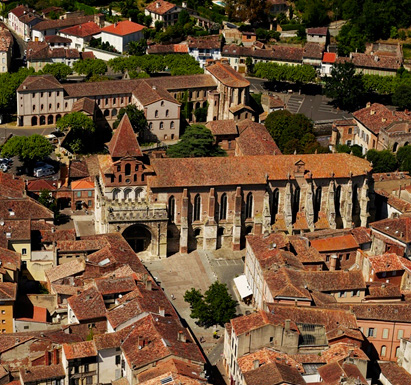
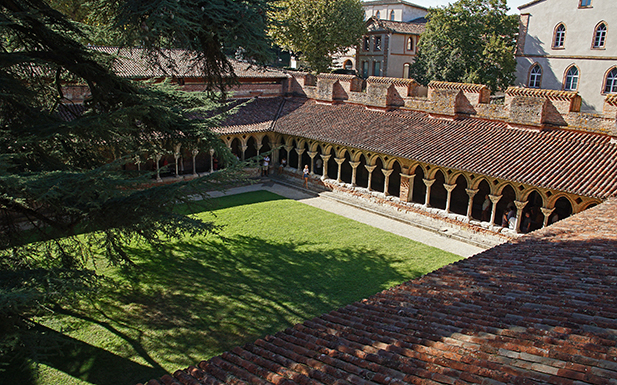
The cloister
It is one of the largest and best-preserved cloisters from the Romanesque period. It's famous for the diversity and the richness of its sculpted and varied decoration on 8 pillars and 76 capitals. A lot of them are "storiated" (which means sculpted with stories) and the episodes depicted therein take us into the cultural universer of the end of the 11th century. Beauty is also hidden in the details... intertwined birds, palmettes (small palm leaves), rosettes and plant foliage whose profusion and diversity contribute to the creation of a harmonious whole.
For more informations about the capitals and their significations, don't hesitate to check the cenobium website !
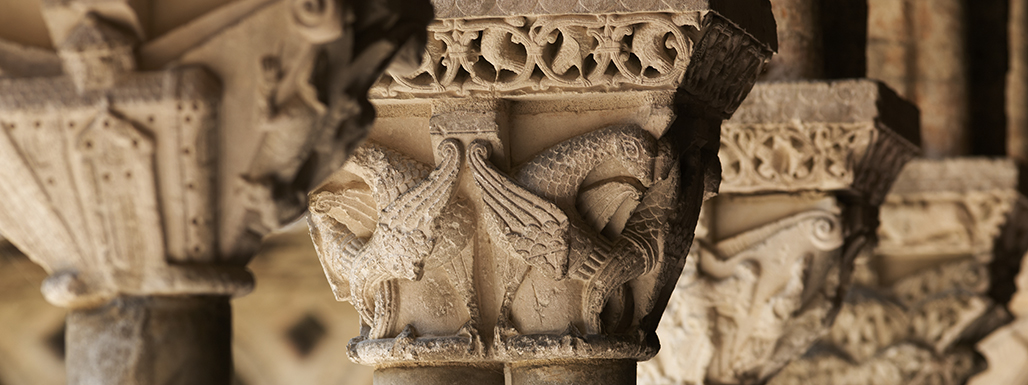
The portal
The southern portal of the abbey church opens on the main square of the medieval town. It is one of the largest Romanesque portals but also one of the most abundantly sculpted. The tympanum depicts Christ’s return on earth at the end of time : he sits enthroned at the centre, majestic and blessing the world. The sides narrate the childhood of Christ and condemnation of the sin of greed. Animals, demons and others fantastical creatures take us to the heart of the medieval world. Some great sculptors have worked here, as seen in the wonderful melancholic face of the prophet Jeremiah.
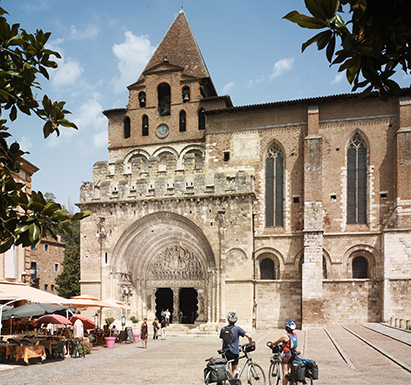
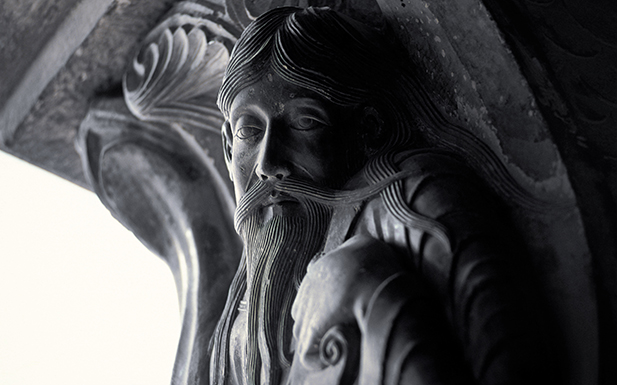
The high chapel
Through the cloister you can go upstairs to the upper vaulted room of the church’s tower gate, a wonder of Romanesque architecture. Made on a square plan, its vault is stunning with its ribs that radiate around a central oculus. The sidewalls are punctuated by twelve large openings, some of them give onto admire the inside of the abbey church from the first floor.
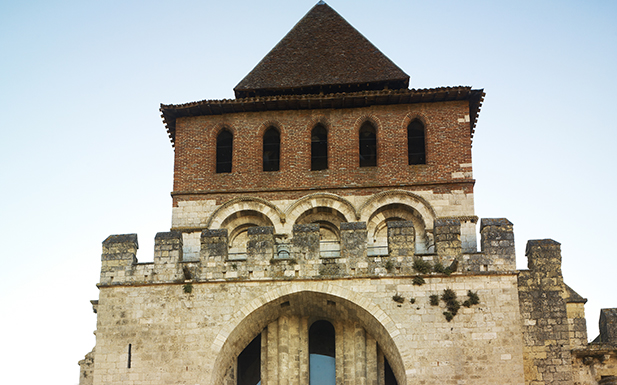
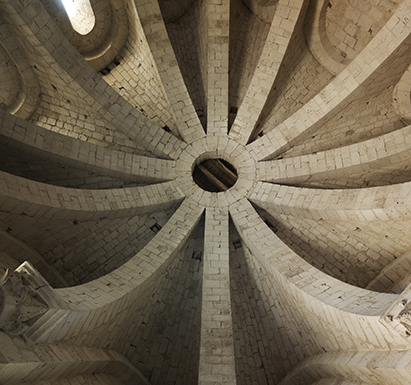
The abbey church
The Abbey church of Saint-Pierre, nowadays a parish church, bears the marks of more than a thousand years of religious life. Modified several times, it appears to us mainly in its 15th century state with its ribbed vaults, its heptagonal choir and its painted decoration. However, the lower parts preserved the semicircular arches from the Romanesque roots. You can admire there some wonderful sculptures of which a rare Romanesque Christ in polychromed wood as well as works from the 15th century of which two Pieta (or Virgin of pity) and an impressive Entombment of Christ.
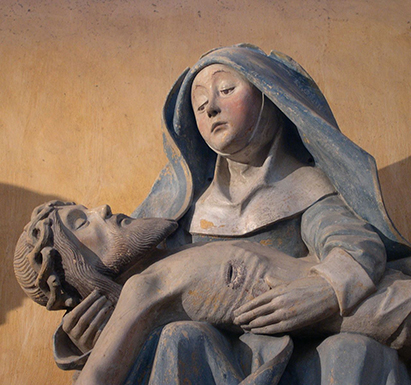
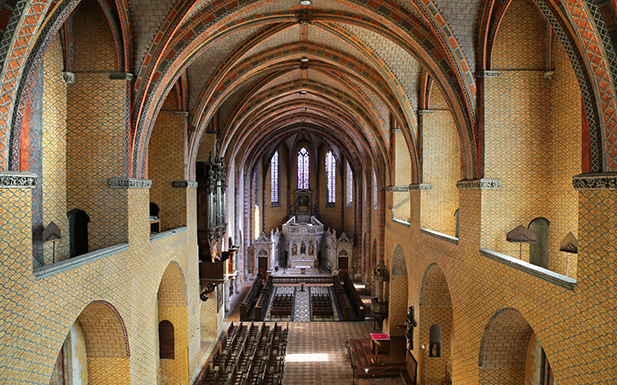
The other buildings
The chapel of the ancient hospice of the monastery, dedicated to Sainte-Foy, still has the remains of a set of frescoes dating from the end of the 12th century. Restorations carried out in 2008 rediscovered the medieval colors, harmonies of blue, red, brown…. all making up an opulent Tree of Jessé and the Apostolic College.
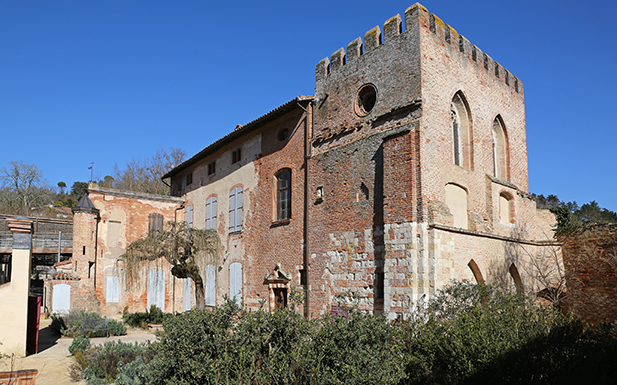
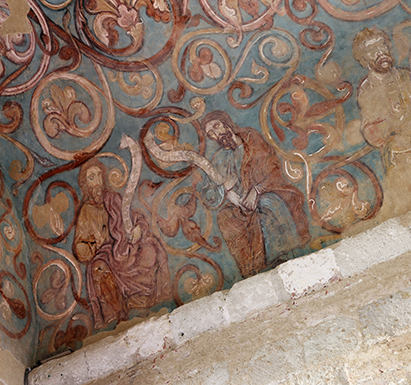
In the northern districts of the abbey, the Centre of Romanesque Art Marcel Durliat houses for all, visitors, students, research workers…. a library specialising in Romanesque art and reproductions of the illuminations made by the monks of Moissac in the 11th and 12th centuries. Open by appointment with the heritage department (contacts in the “practical information” tab).












